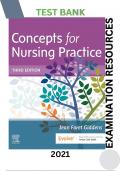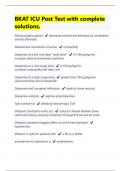Exam (elaborations)
EVOLVE HESI PHARM PN VERSION 2 EXAM 2024 WITH ACTUAL CORRECT QUESTIONS AND VERIFIED DETAILED RATIONALES ANSWERS BY EXPERTS |FREQUENTLY TESTED QUESTIONS AND SOLUTIONS |ALREADY GRADED A+ |NEWEST |LATEST UPDATE |GUARANTEED PASS
- Course
- Institution
EVOLVE HESI PHARM PN VERSION 2 EXAM 2024 WITH ACTUAL CORRECT QUESTIONS AND VERIFIED DETAILED RATIONALES ANSWERS BY EXPERTS |FREQUENTLY TESTED QUESTIONS AND SOLUTIONS |ALREADY GRADED A+ |NEWEST |LATEST UPDATE |GUARANTEED PASS
[Show more]












